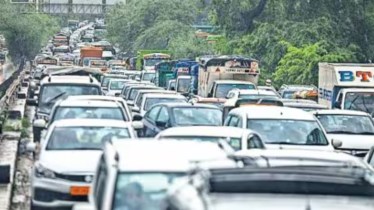By Mr. Nishchal Chaudhary, Founder, BattRE Electric Mobility
In the bustling urban landscapes of India, the need for efficient and sustainable transportation solutions has never been more crucial. As cities continue to grow, so does the challenge of last-mile connectivity. The final leg of a commuter’s journey, from a transportation hub to their destination, often poses significant hurdles, leading to congestion, pollution, and increased commuting time. In this regard, two-wheeler electric vehicles (EVs) have emerged as a promising solution, revolutionizing urban commuting, and addressing the challenges of last-mile connectivity in the Indian ecosystem.
Urban commuting in India is plagued by heavy traffic and its associated problems. According to a report by TomTom, cities like Mumbai, Delhi, and Bengaluru rank among the most congested in the world, resulting in significant time wastage and increased fuel consumption. Traffic congestion not only leads to productivity losses but also contributes to air pollution and environmental degradation. In fact, a study by the World Health Organization (WHO) estimated that around 1.5 million deaths in India are attributable to air pollution.
To address these challenges, two-wheeler EVs offer a compelling solution. By embracing electric mobility, cities can significantly reduce emissions and improve air quality. According to a study conducted by the Center for Science and Environment (CSE), electric two-wheelers emit up to 90% less greenhouse gases compared to their petrol-powered counterparts. This shift to electric mobility can play a vital role in mitigating the harmful effects of vehicular pollution, contributing to cleaner and healthier cities.
Moreover, the economic cost of traffic congestion cannot be ignored. A report by the Boston Consulting Group estimated that traffic congestion in Indian cities costs the country around ₹1.5 lakh crore ($20 billion) annually. This includes fuel wastage, productivity losses, and increased healthcare expenses due to air pollution-related health issues. By promoting the use of two-wheeler EVs for last-mile connectivity, cities can alleviate traffic congestion, reduce travel time, and minimize economic losses.
The affordability and operational cost savings of two-wheeler EVs make them an attractive option for urban commuters. Electric two-wheelers have lower operating costs compared to conventional vehicles, thanks to the significantly lower cost of electricity compared to petrol or diesel. A study by Bloomberg NEF revealed that electric two-wheelers can have up to 70% lower operating costs per kilometre compared to their petrol-powered counterparts. This makes them a cost-effective solution, particularly for short-distance commuting within cities.
To further accelerate the adoption of two-wheeler EVs, the Indian government has implemented various incentives and subsidies. Under the PM E – Drive, electric two-wheelers are eligible for subsidies, making them more affordable for consumers. Additionally, the government has provided GST exemptions and income tax benefits to promote the uptake of electric vehicles. These policy measures aim to create a favourable ecosystem for electric mobility and encourage individuals to make the switch to cleaner and greener transportation options.
The revolutionization of urban commuting through two-wheeler EVs offers a viable solution to address the challenges of last-mile connectivity in India’s cities. By reducing traffic congestion, improving air quality, and offering cost-effective transportation, two-wheeler EVs can transform urban mobility. With concerted efforts, India can pave the way for a sustainable and efficient urban transportation system, enhancing the quality of life for its residents and fostering a greener future.
Disclaimer: Views and opinions expressed by the author are independent and have no relation with Financial Express Online.
